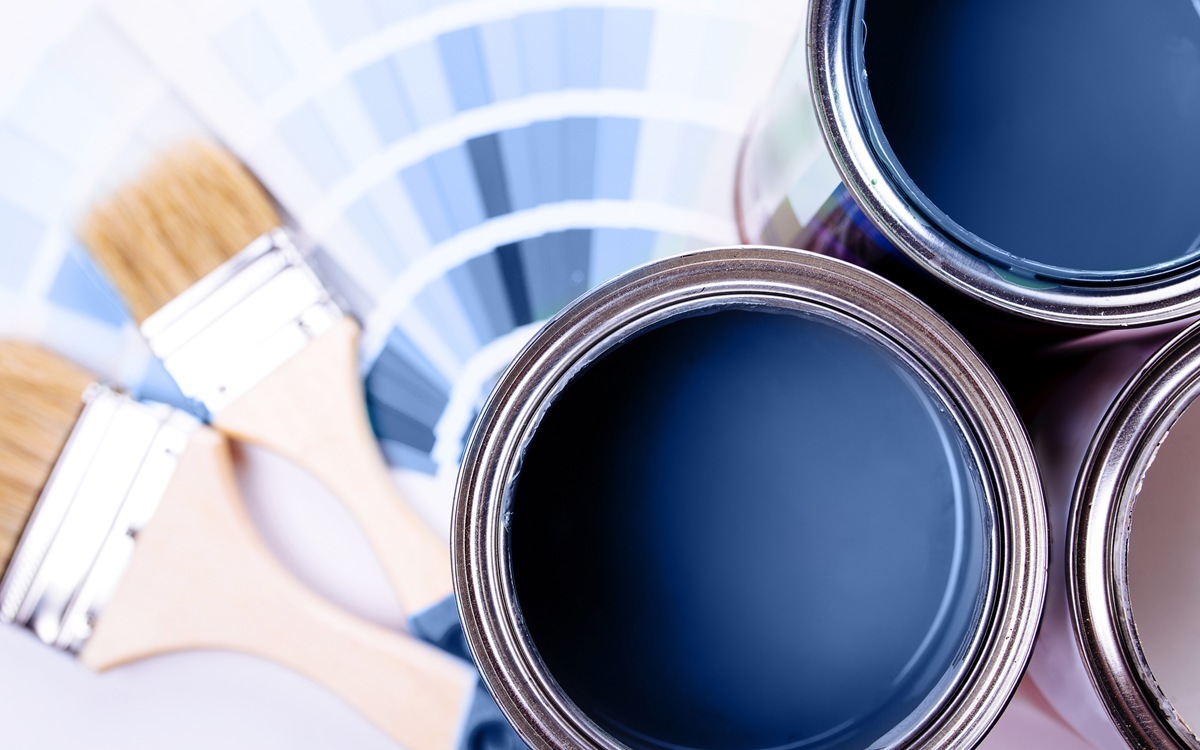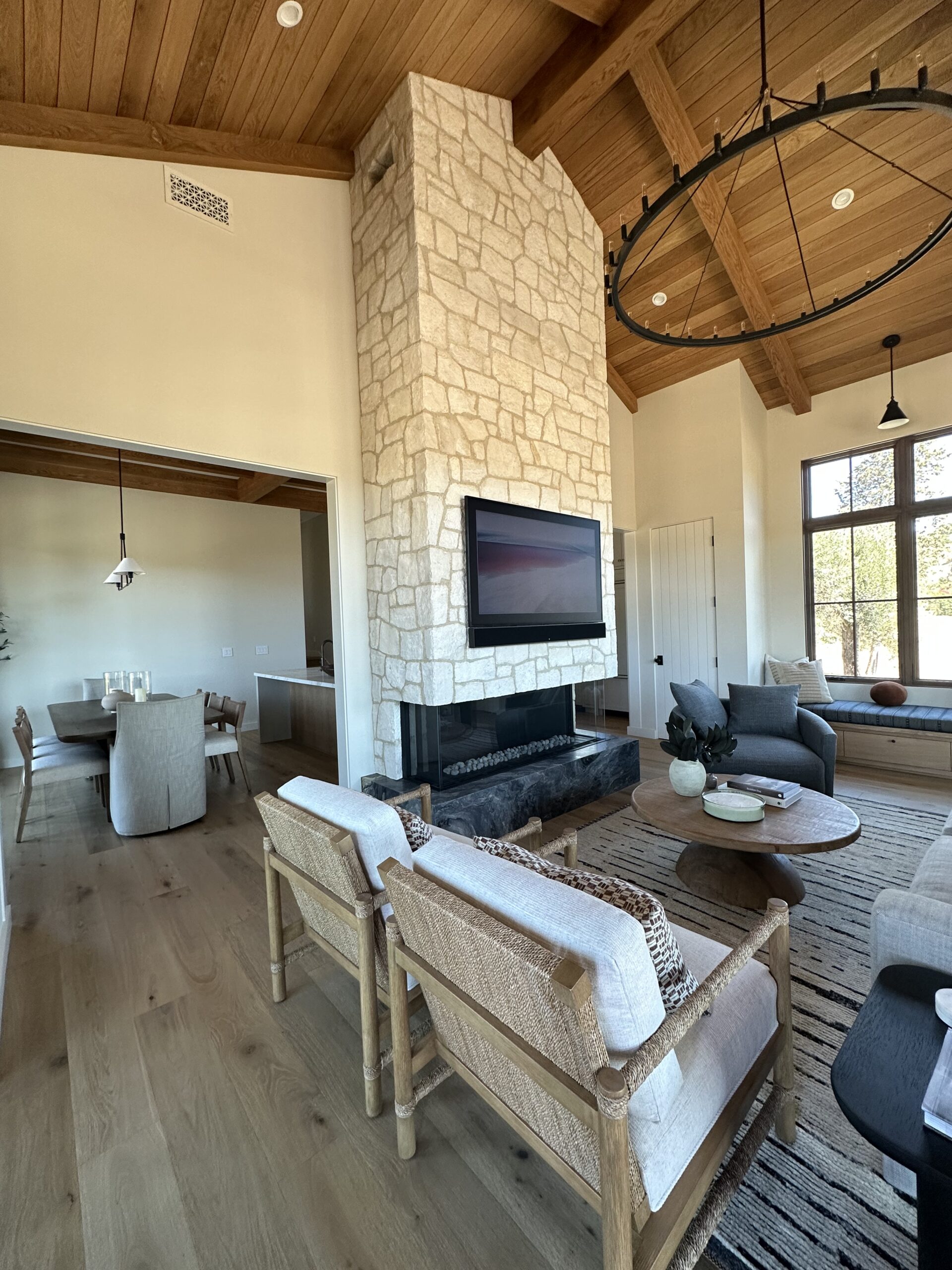If you’re planning an interior house painting project, you might be tempted to grab whatever paint is on sale — even if it’s labeled for exterior use. But you might be wondering: can I use exterior paint inside my house? It’s a common question that deserves a clear, detailed answer.
In this guide, we’ll break down the key differences between interior and exterior paint, explain why they matter, and help you make the safest, smartest decision for your home. Whether you’re updating a bedroom or repainting a kitchen, the type of paint you use matters more than you think.
Key Takeaways:
- Exterior paint is not safe for indoor use due to its chemical makeup and off-gassing.
- Interior paint is designed for indoor air quality and wear resistance.
- Using the wrong type of paint can lead to poor results or health risks.
- Proper prep and product selection are key for any interior house painting project.
- Always prioritize safety when choosing paint for your home.

What Makes Interior and Exterior Paint Different?
Let’s start with the basics. Paint may look the same in the can, but interior and exterior formulas are built differently.
1. Durability and Exposure
- Exterior paint is made to withstand harsh weather, UV rays, and moisture. It has additives like mildewcides and flexible binders to resist cracking and fading.
- Interior paint doesn’t face the same environmental stress. Instead, it focuses on smooth finishes, scrubbability, and low odor.
2. Chemical Composition
- Exterior paints contain more volatile organic compounds (VOCs), which help the paint resist mold and mildew but can off-gas dangerous fumes indoors.
- Interior paints are made to be low-VOC or even zero-VOC, making them safer for enclosed spaces.
3. Finish and Aesthetics
- Interior paints come in a wider variety of sheens and textures designed for decorative appeal.
- Exterior paints tend to focus on longevity and may have fewer finish options.
Can I Use Exterior Paint Inside My House?
Short answer: No, you shouldn’t.
Even though it might seem like a good idea to repurpose leftover exterior paint for an indoor job, it’s not safe or smart.
Here’s why:
1. Toxic Fumes and Off-Gassing
Exterior paint is designed to release chemical fumes outdoors, where air circulation disperses them. Indoors, these VOCs accumulate and can pose serious health risks over time, especially to children, pets, or people with respiratory issues.
2. Unpleasant Odor
Even after drying, exterior paint can continue to emit a strong, chemical smell for weeks or even months indoors.
3. Surface Compatibility
Exterior paint may not adhere well to indoor surfaces. It can peel, bubble, or crack in a climate-controlled environment.
4. No Benefit Indoors
All those weatherproofing agents and UV protectants? They’re useless inside and don’t justify the risk.

Health and Safety Concerns
When it comes to an interior house painting project, health and safety should always come first.
Safety Tips:
- Never use exterior paint inside — especially in bedrooms, nurseries, or kitchens.
- Look for low-VOC or zero-VOC interior paints to reduce indoor air pollution.
- Ventilate the room well during and after painting, even with safer paint types.
- Wear a mask and gloves when handling any type of paint.
- Store paint properly, out of reach of children and away from heat sources.
Choosing the Right Paint for the Job
Interior Paint:
- Best for: Bedrooms, living rooms, kitchens, bathrooms.
- Features: Easy to clean, wide range of finishes, low odor.
- Ideal for: Aesthetic appeal and everyday durability.
Exterior Paint:
- Best for: Siding, decks, fences, garages.
- Features: Weather-resistant, mold-resistant, durable under UV exposure.
- Not ideal for: Any enclosed indoor area.
Common Myths Busted
Myth 1: “Exterior paint is more durable, so it must be better.”
Truth: Durability outdoors doesn’t translate to better performance indoors.
Myth 2: “I can just open a window and be fine.”
Truth: VOCs can linger for weeks — even with ventilation.
Myth 3: “Paint is paint.”
Truth: Modern paints are highly specialized. The wrong choice can affect your health, your home, and your wallet.
What Happens If You Already Used Exterior Paint Indoors?
If you’ve already applied exterior paint inside your home, don’t panic. Here’s what you should do:
- Increase ventilation immediately.
- Avoid prolonged exposure to the painted area.
- Consult a professional about removal or sealing options.
- Consider repainting with a safe interior formula.
Final Thoughts: Make Smart Paint Choices
A successful interior house painting project doesn’t just depend on color and technique — it starts with using the right kind of paint. While you might still be wondering, “Can I use exterior paint inside my house?” — the answer is a clear no.
Interior and exterior paints are carefully formulated for different environments. Choosing the wrong one can lead to health issues, poor results, and wasted time. Stick with high-quality, low-VOC interior paint to protect your home and your family.
Still unsure which paint is right for your project? Let the pros help.
Contact Rojas Painting today at 707-353-7471 for expert guidance on all your home painting needs. We’ll help you choose safe, beautiful paint that lasts.



